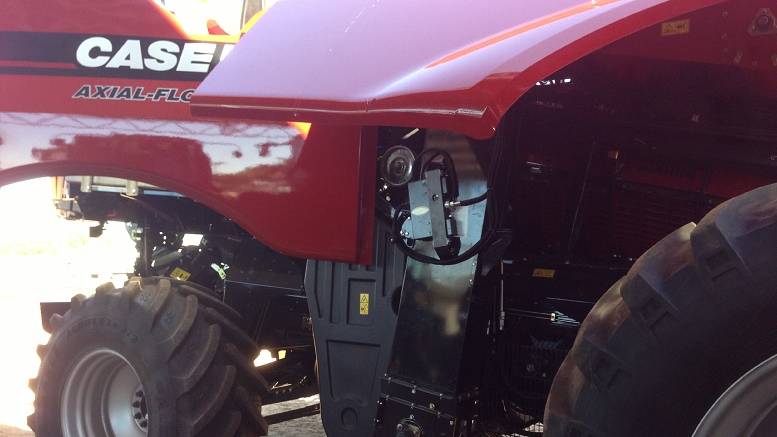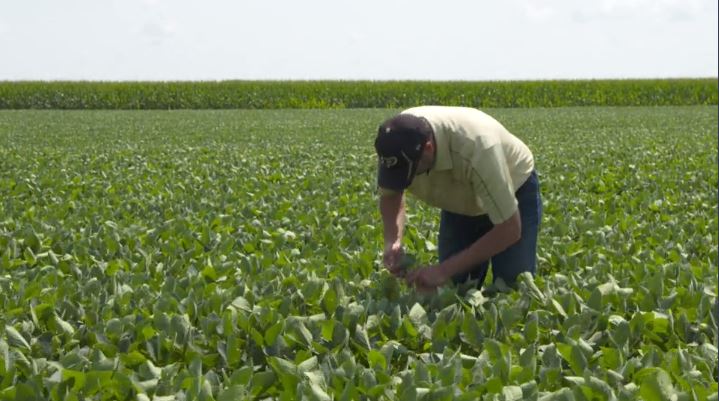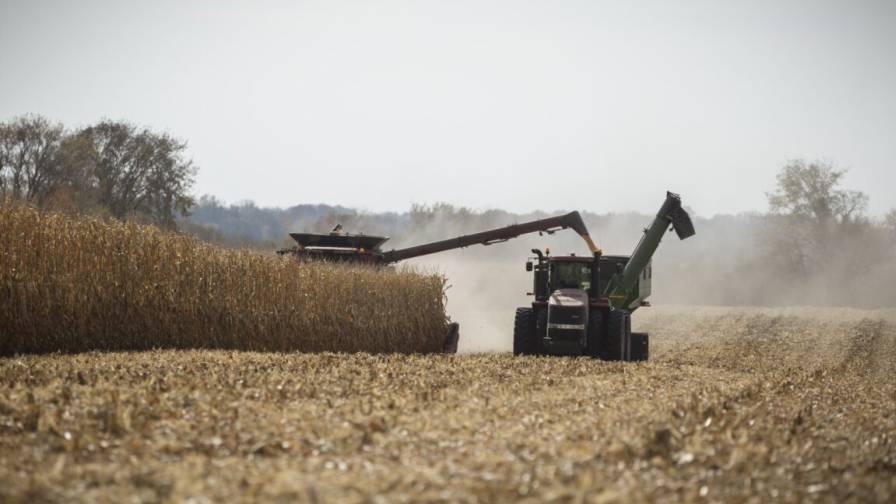In-Cab Computing 2015: Connectivity, Compatibility Take Center Stage
In terms of in-cab computing solutions for the agriculture market, companies like Case IH, Topcon, Trimble, John Deere and Raven spent the past twelve months mostly tweaking and adding capabilities to make their displays more modular, more automated and more customizable to the end user.
“I like to think the off-road industries tend to follow trends of the on-road or automotive industry,” says Mike Gomes, VP of Business Development, Topcon Precision Agriculture. “And that’s what we’re seeing within in-cab computing; guys want to view multiple screen views with more features and have the capability to make machine specific adjustments with a single touch. Similar to car buyers who favor a secondary premium color display for music, climate control, navigation and trip routing differentiated from the dashboard machine diagnostics of an automobile.”
Topcon did, however, release a new display in the last few months with its 8-inch X25 display, which debuted back in December, just in time for the winter trade show circuit. X25 is the mid-range display to compliment Topcon’s “X” family of displays, as their X30 is a 12.1-inch screen while X14 features a 4.3-inch screen.
X25 features Topcon’s Horizon software, along with its popular customizable dashboard, and it allows an operator to view up to 3 operating screens with the capability of utilizing 2 mini-view widgets (for example a VR prescription map and rate control view), allowing for on-the-go swapping of three different diagnostic views with the swipe of a finger.
“More often, adopting precision agriculture has meant putting a second console in the cab to facilitate various implement functions,” says Gomes. “X25 has been receiving attention because of it’s smaller size and price point that fits the needs of small to mid-sized farms, smaller tractor cabs and is also popular in the International markets of Europe and Asia. Operators also appreciate Topcon’s modular product philosophy and ISO 11783 connectivity, with the ability to add autosteering via the AGI-4 component or Rate and section control via the ASC-10.”
According to Gomes, X25 finds its fit with the user that requires some of the advanced functionality that comes with the top-of-the-line X30, but don’t “quite need all of the bells and whistles.”
Going forward, Topcon continues to add functionality to their Horizon software, such integration of their Water Conservation suite, integration with CropSpec, Topcon’s “on-the-go” crop canopy sensors and a continued commitment to expanding functionality and compatibility via ISO-11783 protocols.
“It’s about providing solutions that customers can grow with, as they deepen their adoption of precision agriculture into their farming operations,” says Gomes.
He also notes Topcon’s recent acquisition of German OEM display console manufacturer Wachendorff Electronics as an indication of the company’s commitment to continued growth in the industry.
Trimble
Trimble, meanwhile, continues to innovate its premier, highest functioning in-cab display, the TMX-2050.
New for 2015 is the display’s customizable app-based environment and support for the WM-Form land forming solution.
T.J. Schulte, market manager for Trimble Agriculture, says the recent updates to the Android-based display include a suite of apps that provide growers with greater flexibility to customize the display for their farming operations. Going forward, Trimble also is focused on working with resellers on new specific-to-market TMX-2050 apps. The company provides a webpage where developers can submit app ideas directly to Trimble.
WM-Form, which ties in with Trimble’s much-discussed Connected Farm farm management software, also uses RTK to generate a “high accuracy topographic three dimensional image of a field, according to Chris van der Loo, Water Solutions marketing director.
“For a grower that’s dealing with some ponding issues on one segment of their field, we can use WM-Form to reshape the land surface with minimum cut and fill – which saves time and fuel,” he says.
Van der Loo ticks off quite a few benefits of implementing WM-Form, from being able to open up more land for surface irrigation opportunities out west by reconfiguring the slope of the land for optimal water permeation and erosion avoidance, to ensuring levees for a rice grower in the South are a lot straighter for optimal watering of the field, and minimal dirt movement.
“I think it’s worth mentioning Trimble’s long and well-documented history in land leveling,” van der Loo says. “WM-Form is an end-to-end solution from start to finish and is powered by some of the highest quality surface design algorithms in the industry.”
John Deere
Back in February John Deere (Olathe, KS) announced enhancements to both its Machine Sync automated data transfer solution, as well as its GreenStar 3 2630 Display.
“We’ve taken John Deere Machine Sync to the next level in multi-machine automation and operational logistics,” said J.C. Funke, Deere Intelligent Solutions Group, in a press release. “We’ve expanded the original combine harvest automation and logistics functions that facilitate on-the-go harvesting and combine-grain cart synchronization to make the application useful for other field operations.”
Funke says Machine Sync now has the ability to share coverage maps while seeding, spraying or applying fertilizer, and section control can now be triggered on or off based on another machines coverage map, resulting in faster field operations, reduced skips and overlaps, and improved efficiencies when multiple machines are working in the same field. Guidance lines are also shareable between machines, a feature especially useful for when two vehicles are working in the same field and need to use AutoTrac on the same guidance lines.
The GreenStar 3 2630 has also been improved for 2015 with a new 15-1 software update and other improvements. The software update provides up to a 20% improvement in processing speed when using processor-intensive applications and AB Curve shift track that now provides the ability to shift AB Curves radially right or left without overlap.
Other 2630 improvements include ISOBUS Task Control functionality, providing section control of ISO implements when used with JD Section Control, and the ability to import larger prescription shapefiles that what previously could be imported.
“The improvements and expanded functionality to Machine Sync and the 2630 Displays are part of our efforts to provide customers with the latest in precision technology, data management and automation across more field operations,” Funke said.
Raven Industries
Raven Industries, meanwhile, has released a few updates for its flagship display, Viper 4 – which Ryan Molitor, marketing manager, says is geared toward use in large application equipment such as sprayers and dry fertilizer spreaders.
New for 2015 for Viper 4 is the addition of an ISOBUS virtual terminal – which helps Raven offer the ISO-compatible products (not just Raven proprietary) that users are seeking out in greater numbers, according to Molitor. Also new is the Hawkeye Nozzle Control System – which displays on the Viper 4 as well as other virtual terminals. Slingshot wireless connectivity now allows software updates to be sent wirelessly.
For the next year Raven will be engaging industry partners on Application Program Interfaces (APIs), allowing Viper 4 to extract and use data from third-party products and software solutions.
“For example, with our SST Summit API a grower can create a VR map (shape file) in Summit and then click an option to send it directly to the Viper 4 field computer in the cab,” says Molitor. “Then the applicator pulls up the map, uses it to complete his field tasks and when the job is finished it pushes the map and all the data it captured back to SST Summit. This type of thing is really important to our customers; they don’t want to feel like we’re trying to force them into one data package over another.”
Case IH
Case IH’s precision agriculture brand, AFS, continues to tout its AFS 700 as its top in-cab computing display for 2015.
Joe Michaels, senior director of specialty products, Case IH NAFTA (North America), detailed some updates that have hit the 700 since last May.
“We have added a Multiswath capability, which is a new guidance line pattern, and we’ve also expanded our support of ISOBUS implements with our ISO Task Controller,” he said in a recent email exchange. “Also, our Accu-control software now supports variable rate seeding and granular operations as we expand functionality for previously supported operations like planting and spraying.”
As for wireless data transfer with the 700, Case continues to advocate its “farmer first” approach to data management.
“The producer controls the transfer of the files either by providing access to his portal by his chosen service provider (agronomist, custom applicator, etc.), or by manual transfer,” Michaels says. “It’s very important to us that the producers control their own data. Our AFS Connect farm management system now allows for remote file transfer of data as well.
“What’s more,” he adds, “our latest modems for AFS Connect are dual-banded so they allow for more uninterrupted coverage. This means they receive both a CDMA and GSM signal through over 180 cellular networks – a distinct competitive advantage.”






